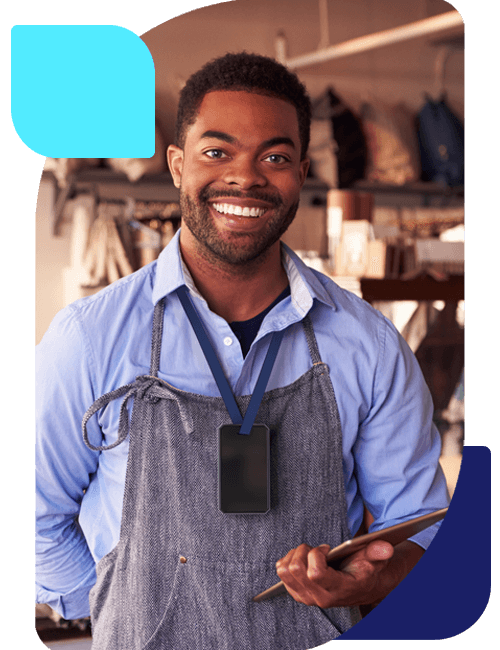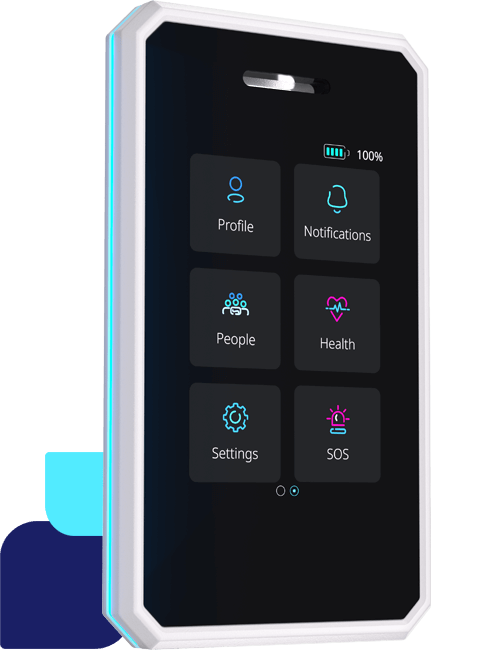Lone workers are often the unsung heroes of the frontline workforce, taking on the daily grind without direct supervision. Despite the fact that many organisations employ these self-sufficient individuals, providing them with the necessary support remains a challenge. To ensure the health and safety of lone workers, it’s crucial to offer them comprehensive support in areas such as employee engagement, productivity, and most importantly, their well-being.
The good news is that advancements in technology, like real-time location systems such as Sense, have made it possible to provide lone workers with the support they need. With features like fall detection, air quality monitoring, and regular supervisor check-ins, these systems ensure the well-being of lone workers while they’re on the job. On top of that, features such as task lists, reporting, and messaging help to improve engagement and productivity, so these lone workers can thrive in their roles.
Here three of the biggest ways wearable RTLS systems like Sense are supporting lone workers.
Ensure compliance with health & safety
Workplaces can sometimes require compliance with strict health and safety policy and reporting. With a system like Sense, automated alerts can be sent to the device wearer to remind them to comply with regulations, and reports can be constructed by management and completed by frontline workers to provide an auditable trial of compliance.
The automated alerts can also be customised to suit the use case. For example, an alert about safety equipment can be triggered when air quality is at a dangerous level, or a reminder can be sent if an employee is due a break. The Sense Badge can even send SOS alerts if falls are detected.
Improved wellbeing
But while being able to check in on a lone worker is crucial to reduce the time taken to alert emergency services, checking in isn’t only useful for emergencies. It also helps to improve employee wellbeing.
Employee wellbeing is a prominent force in the modern workplace. Ensuring people feel safe and supported emotionally, and allowing them to express their concerns about safety or their workload, helps to improve attendance and productivity, as well as job satisfaction.
A lone worker wearable system like Sense can significantly improve employee wellbeing by providing a sense of security and support. For instance, the device can allow a worker to easily check-in with a supervisor or manager, providing reassurance that they are not entirely isolated while working alone. This can also help to alleviate any feelings of stress or anxiety that may arise from working alone in potentially dangerous or isolated environments.
By taking proactive steps to support the wellbeing of lone workers, organisations can not only enhance employee morale and job satisfaction but also increase productivity and reduce absenteeism. Ultimately, the use of lone worker wearable devices can contribute to the creation of a safer and more supportive work environment for everyone involved.
Prioritising tasks for improved productivity
Often, lone worker productivity is only monitored in hindsight once time or resources have been wasted.
With Sense, an employee’s location can trigger certain task lists to be generated when they enter a particular zone. This helps keep employees on track, ensuring all tasks are completed before they move on to another area, or start another piece of work.
Companies find this useful, especially when tasks in different areas must be completed sequentially, or if assets must be taken by the employee from one site to another. Monitoring location and tasks in real time, as opposed to checking at the end of the day, can help prevent wasted time or opportunities.
Being able to check an employee’s location can also help to provide an audit trail of work completed within a shift. This can improve management’s future planning of what tasks to group together, or which tasks work best when completed sequentially.
Real time location systems also allow an employer to generate reports demonstrating that an employee completed a task at a location at a specific time, which works particularly well for contractors, such as cleaners, or security guards.
Encouraging engagement
Staying in touch with colleagues can be difficult for lone workers. A real time location system with built-in messaging allows workers to communicate within their team, helping to improve engagement and collaboration.
Knowing a lone workers location can also help management tailor their messages for more meaningful engagement with their team. For example, a manager sending relevant personalised messages, as opposed to generic questions or statements, can make a huge difference to employee engagement.
A safer and more productive future
In conclusion, the role of lone workers is critical. But their well-being and safety often go unnoticed.
The good news is that advancements in technology, like real-time location systems such as Sense, have made it possible to provide comprehensive support to lone workers.
By ensuring compliance with health and safety regulations, improving employee well-being, prioritising tasks for improved productivity, and encouraging engagement, wearable RTLS systems are transforming the work environment for lone workers.
Is it time for organisations to prioritise the well-being and safety of their lone workers by investing in the latest technologies that support them in their daily roles?







